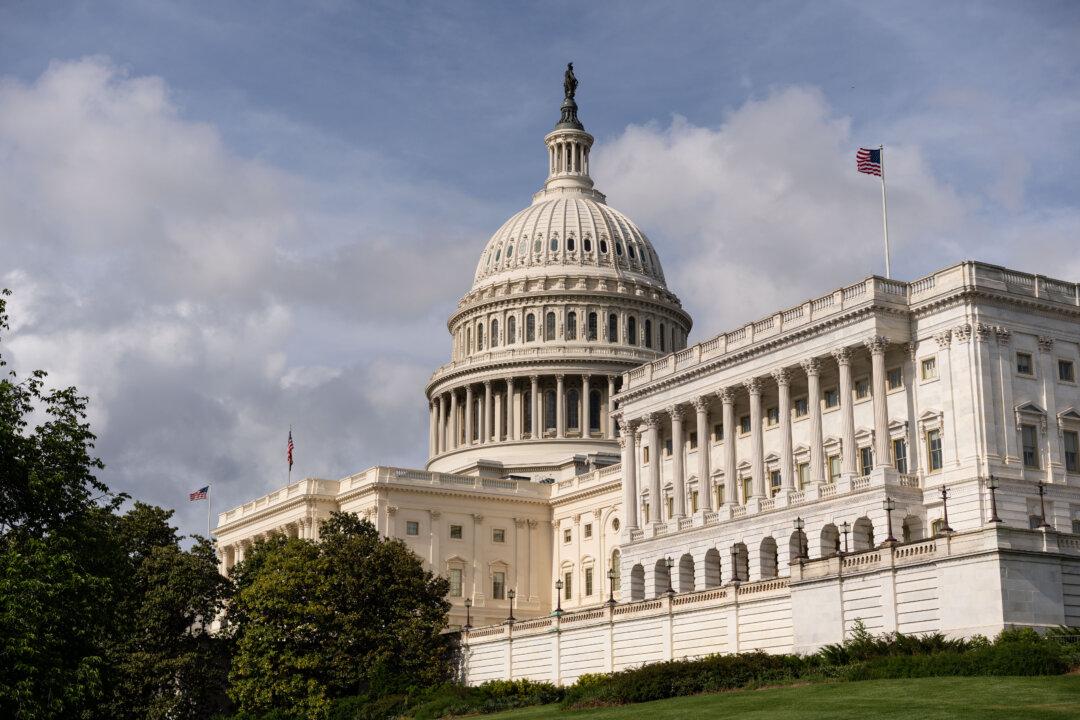Tariff revenues reached a record high in April and helped boost the federal budget surplus for the month, new Treasury Department data show.
The slightly better-than-expected budget surplus reflected a more than 9 percent year-over-year increase in tax receipts in the final month of tax season and an 86 percent jump in tariff revenues.
In April, customs duties totaled $16.3 billion, up from the $7.1 billion collected a year ago.
By comparison, individual income tax and corporate income tax receipts were $537 billion and $94 billion, respectively.
In the fiscal year to date—October 2024 to April—receipts from U.S. tariffs total more than $59 billion, up by approximately 34 percent from the same span in the last fiscal year.
This helped shave the fiscal year-to-date budget deficit to $1.05 trillion, which is 13 percent higher than a year ago. Outlays were up by more than 4 percent from a year ago, fueled by Social Security ($132 billion), net interest payments ($89 billion), Medicare ($82 billion), health ($76 billion), and national defense ($70 billion).
Revenues from U.S. tariffs are expected to slow in the coming months as the White House de-escalates trade tensions with China.
During a meeting with Chinese officials in Switzerland, Treasury Secretary Scott Bessent and U.S. Trade Representative Jamieson Greer agreed to lower the U.S. tariff rate on Chinese goods to 30 percent from 145 percent. China agreed to reduce levies on U.S.-made products entering the country to 10 percent from 125 percent.
Tariff Revenue Projections
In April, White House trade adviser Peter Navarro estimated that tariffs would raise approximately $600 billion to $700 billion annually, or $6 trillion to $7 trillion over the next decade.“Every single dollar that comes in, in tariff revenues that we take from the foreigners who have been cheating us, are going to go right to the American public in terms of tax cuts and debt reduction,” Navarro said on the Fox News Channel program “Sunday Morning Futures.”
Many economists have presented more conservative forecasts.
The Tax Foundation estimated that a 10 percent universal tariff would raise $2.2 trillion on a conventional basis through the 2025–2034 budget window. This assumes trade flows remain unchanged.
“The relative price increase in imports will cause a drop in imports as people substitute away from higher-priced tariffed goods toward non-tariffed alternatives and, in cases of non-uniform tariffs, as trade may be diverted through countries not subject to the tariffs.”
After considering potential adverse macroeconomic effects, the group anticipates that a 10 percent levy would generate $1.7 trillion in revenues over the 10-year budget window.

Senior Trump administration officials say the United States will likely maintain a 10 percent tariff rate on imports.
“We do expect a 10 percent baseline tariff to be in place for the foreseeable future—but don’t buy the silly arguments that the U.S. consumer pays,” Lutnick said in an interview with CNN’s “State of the Union” on May 13.
A common concern has been what will happen to tariff revenue once these import duties decline as the president’s trade goals are realized.
The Treasury chief has said that the president’s trade agenda will initially generate substantial tariff income. However, as more companies build their factories in the United States, tariffs will fall, but incomes will rise.
IBM, Merck, Apple, Hyundai, Nvidia, and many others have committed to hefty investments in the U.S. economy.







